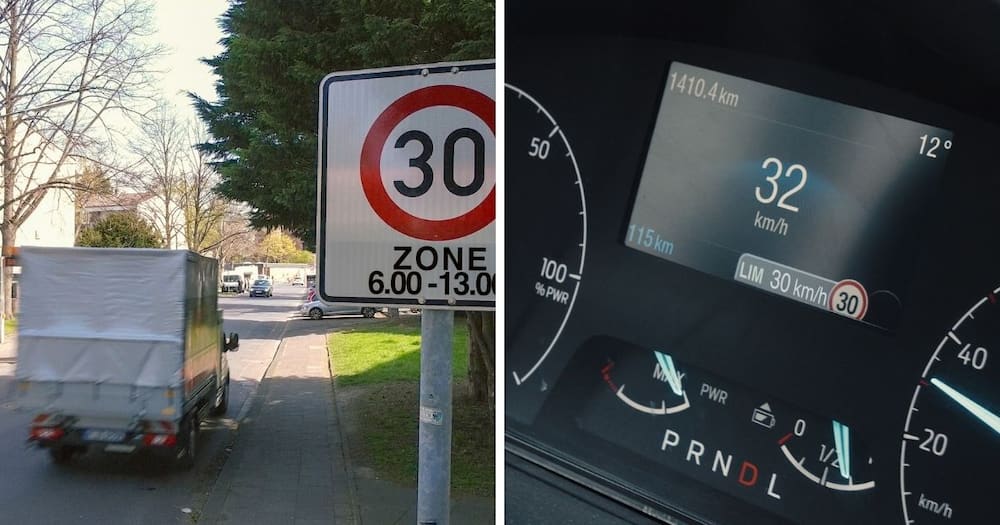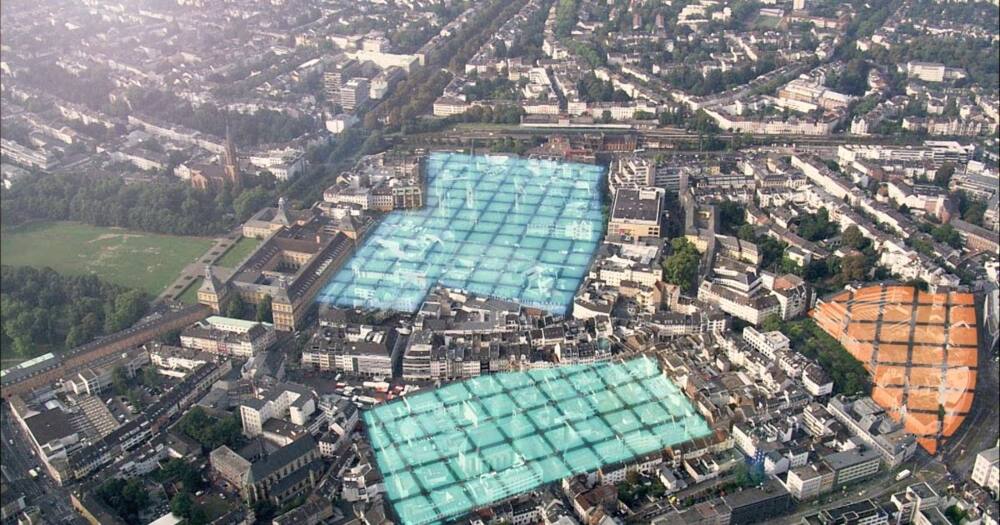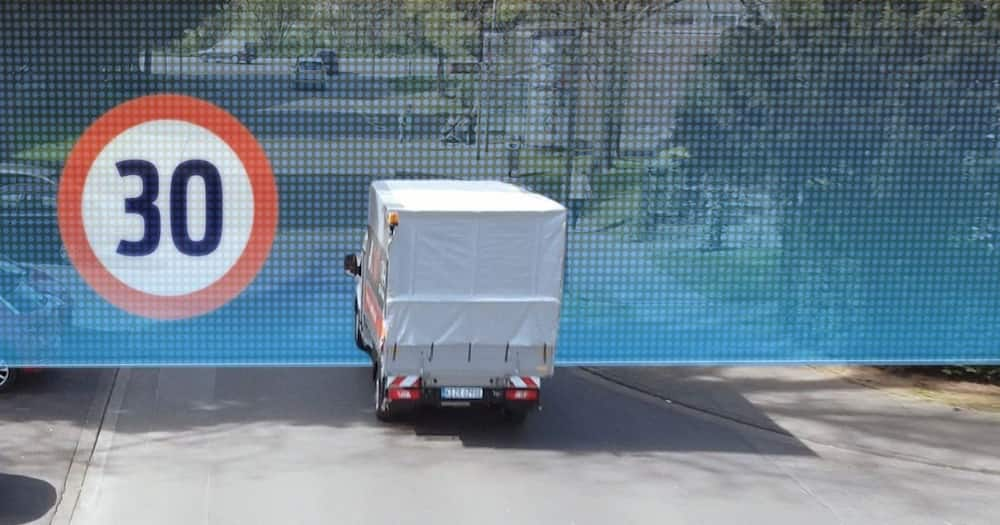Ford is Testing Geofencing Tech That Could Automatically Reduce the Speed of Vehicles to Improve Safety
- Ford connected tech could make streets simpler, safer and easier on the eye, help drivers avoid costly speeding fines and reduce the need for speed signs
- Geofencing technology creates a virtual area where vehicles slow down, rather than relying on drivers spotting signs that may be on unfamiliar routes, or overgrown
- Speed is a key contributing factor in road accidents: 30km/h geofenced zones for schools, hospitals and shopping areas could greatly reduce the risks to all road users
- The test trial in Cologne, Germany, uses an all-electric Ford E-Transit and Tech could in the future work with its commercial and passenger vehicles
PAY ATTENTION: Click “See First” under the “Following” tab to see Briefly News on your News Feed!
Many cities and towns limit speeds around schools, hospitals and shopping areas.
Seeing the signs, however, can depend on how visible they are, whether they are concealed by branches, or maybe surrounded by a cluster of other signs.

Read also
Renault's new Scenic Vision concept previews a electric crossover set for 2024 introduction

Source: UGC
Now, Ford is trialling connected vehicle technology using geofencing – a virtual geographical boundary – that could one day do away with the need for speed limit signs completely, Quickpic reports.
As well as potentially making streets safer for other road users and pedestrians, Ford’s Geofencing Speed Limit Control system could help drivers avoid inadvertently incurring speeding fines and improve roadside appearances.
PAY ATTENTION: Follow us on Instagram - get the most important news directly in your favourite app!
Michael Huynh, manager, City Engagement Germany, Ford of Europe says:
“Connected vehicle technology has the proven potential to help make everyday driving easier and safer to benefit everyone, not just the person behind the wheel, geofencing can ensure speeds are reduced where – and even when – necessary to help improve safety and create a more pleasant environment.”

Source: UGC
According to Ford, in Europe, up to 29 per cent of road fatalities are pedestrians and cyclists, depending on the country. Setting up 30km/h zones is considered one of the key measures to reduce the risk to pedestrians in urban areas, as drivers have more time to react and the impact speed is lower.
Driver assistance technologies such as Ford’s Intelligent Speed Assist and Adaptive Cruise Control with Stop and Go already help ensure drivers do not exceed speed limits. The US carmaker's Geofencing Speed Limit Control system is potentially more flexible and effective than on-board systems, and could in future be applied to Ford commercial and passenger vehicles.
Researchers are using two FordPro vehicles to analyse the impact of speed limiting in terms of improving traffic flow and reducing the risk of accidents. Testing with the all-electric Ford E-Transit vans extends to all 30km/h zones in the centre of Cologne, Germany, as well as in selected 50km/h and 30km/h zones elsewhere in the city.
The 12-month trial builds on other recent Ford research projects that endeavour to help improve road safety, including connected traffic light tech that could automatically go green to offer clearer routes for ambulances, fire engines and police vehicles, and the use of specific speakers inside the vehicle to alert drivers to the direction from which people and objects are approaching.
Ford’s Local Hazard Information, introduced on Ford Puma in 2020, is also helping to make roads safer. The connected technology, now on 500 000 Ford vehicles in Europe, alerted drivers to more than 35 000 broken down vehicles, both Ford and non-Ford, and warned drivers of more than 100 000 hazards ahead per month in Europe in 2021.

Source: UGC
The trial is the result of a collaboration between the Ford City Engagement team, city officials in Cologne and Aachen, and Ford software engineers in Palo Alto, in the US. Together with colleagues in Aachen, the Palo Alto engineers developed technology that connects the vehicle to the geofencing system for GPS tracking and data exchange.
The driver receives the information via the dashboard display cluster, with the new speed limit flashing below the current speed. The vehicle automatically reduces speed in line with the geofenced zone. The driver can override the system and deactivate the speed limit control at any time.

Read also
Hero or zero: Viral truck driver arrested after endangering motorists amid calls for confiscation of his licence
In the future, Ford’s Geofencing Speed Limit Control system could enable drivers to set their own geofencing zones at speeds as low as 20km/h, including at depots and private facilities. Speed limits could also be set dynamically, to take into account local hazards, temporary road works and the time of day.
The German Traffic Code has over 1 000 types of road signs. In the UK, it is estimated that the number of road signs has doubled in the last two decades, to around 4,6 million in total, with the Department for Transport requesting that local councils remove unnecessary and unsightly signs. 7 Reducing the number of signs on the roads could go a long way towards decluttering our cities, with drivers able to concentrate on the roads rather than keep watch for signs.
The trial runs until March 2023 and is part of broader research initiatives putting pre-production and prototype Ford E-Transit vehicles to the test across a variety of intensive real-world operating scenarios, including in the postal, municipal and utility services, as well as last-mile and grocery delivery sectors within France, Germany, Italy, the Netherlands, Norway and the UK.
Ford’s new SA-Built Ranger will debut a host of new tech, here’s what to expect
Ford's popular Ranger will launch in South Africa sometime this year, the company has pinned down a definite date as yet. However, they did share more information on the technology we can expect to see once it arrives on local shores, Briefly News reports.
For starters, the analogue display makes way for a 20cm fully-digital instrument cluster displaying the speedometer, tachometer and driving modes among other information. The instrument cluster also incorporates body-style avatars and different layouts can be chosen displaying driver-assist technologies and extra gauges. The different on-road and off-road driving modes carry a different theme when selected.
On the topic of screens, it's hard not to notice the standard 25cm touchscreen located prominently on the centre console. The tablet-style screen was chosen as it's able to incorporate navigation while lower down climate and entertainment controls can also be displayed.
Source: Briefly News



